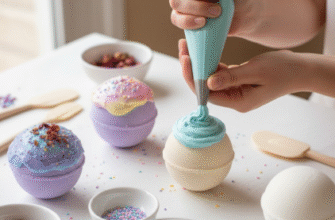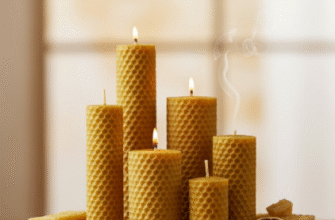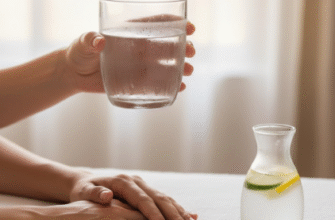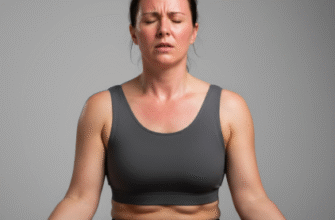Feeling overwhelmed by the daily grind? You’re not alone. The constant buzz of notifications, endless to-do lists, and the pressure to always be ‘on’ can leave anyone feeling frazzled. While a professional spa day sounds divine, it’s often a luxury in terms of both time and money. But what if you could capture that serene, rejuvenating feeling right within your own four walls? Creating a relaxing spa atmosphere at home is easier than you might think. It’s about intentionally carving out space and time for yourself, engaging your senses, and transforming a familiar environment into a personal sanctuary.
It doesn’t require a massive overhaul or expensive gadgets. It’s about small, mindful adjustments that signal to your brain and body that it’s time to unwind, release tension, and simply breathe. Think of it as curating an experience, layering elements that promote calm and tranquility. Let’s explore some simple steps to turn your home, particularly your bathroom or bedroom, into a haven of relaxation.
Setting the Sensory Stage
Our senses are powerful gateways to relaxation. Engaging them intentionally is key to shifting from a state of stress to one of peace. A true spa experience tantalizes sight, sound, smell, and touch to create an immersive cocoon of calm.
Visual Calm: Declutter and Dim
First things first: clear the clutter. It’s incredibly difficult to relax in a space that feels chaotic or visually noisy. Take a few minutes to tidy up the area you plan to use for your spa time. Put away laundry, clear surfaces, and remove anything that reminds you of chores or work. A clean space promotes a clear mind.
Next, address the lighting. Harsh, bright overhead lights are the enemy of relaxation. Opt for softer, warmer light sources. Dimmer switches are fantastic, but if you don’t have them, use lamps instead of ceiling lights. Candles are a classic choice for a reason – the gentle flicker is inherently calming. Consider natural beeswax candles or soy candles for a cleaner burn. Himalayan salt lamps also cast a lovely warm, pinkish glow that many find soothing. The goal is to create a soft, womb-like ambiance where your eyes can relax.
Auditory Peace: Sounds of Silence or Serenity
What sounds typically fill your home? The television? Traffic? Loud neighbours? Consciously replace stressful noise with sounds that promote tranquility. For some, this might mean embracing complete silence – perhaps using earplugs if necessary. For others, calming music works wonders.
Create a spa playlist featuring:
- Instrumental music (classical, ambient, lo-fi)
- Nature sounds (rain, waves, birdsong)
- Binaural beats or sound baths (available on many streaming apps)
Aromatic Bliss: The Power of Scent
Scent is deeply connected to memory and emotion, making aromatherapy a powerful tool for relaxation. Introducing calming fragrances can instantly change the mood of a room. Essential oil diffusers are a popular and effective option. Choose high-quality essential oils known for their relaxing properties:
- Lavender: The quintessential relaxation scent, known for promoting calmness and sleep.
- Chamomile: Gentle and soothing, often used to ease anxiety.
- Bergamot: Uplifting yet calming citrus scent.
- Sandalwood: Warm, woody, and grounding.
- Ylang-Ylang: Sweet floral scent known for reducing stress.
If you don’t have a diffuser, scented candles work well too. Alternatively, simmer a pot of water on the stove with citrus peels, cinnamon sticks, or herbs like rosemary. Even a simple vase of fresh flowers like eucalyptus or lavender can subtly scent the air.
Important Safety Note: Always ensure good ventilation when diffusing essential oils, especially if you have pets, children, or respiratory sensitivities. Some essential oils can be harmful if inhaled excessively or if they come into contact with skin undiluted. Never leave burning candles unattended and keep them away from flammable materials.
Tactile Comfort: Softness and Warmth
Think about the textures you associate with comfort. Plush towels, soft robes, smooth fabrics. Upgrade your everyday items or designate specific ‘spa’ linens. Ensure you have a wonderfully soft, fluffy towel ready for after your bath or shower. A comfortable robe or even soft pajamas enhance the feeling of being pampered. Consider adding a soft bath mat or rug to step onto. Temperature matters too – ensure the room is comfortably warm so you don’t feel chilled while trying to relax.
Transforming Your Bathroom into an Oasis
The bathroom is often the easiest place to create a dedicated spa zone. It’s private, contains the essential elements (water!), and can be relatively easily transformed.
Cleanse the Space
We mentioned decluttering, but a clean bathroom is non-negotiable for a spa feel. Scrub the tub or shower, wipe down surfaces, and clean the mirror. A sparkling clean space feels fresh, hygienic, and much more inviting for a relaxing ritual. Stow away everyday toiletries that aren’t part of your spa experience – less visual clutter equals more calm.
Bring Nature In
Adding a touch of greenery can instantly make a bathroom feel more serene and spa-like. Many plants thrive in the humid environment of a bathroom. Consider options like:
- Spider plants
- Snake plants
- Orchids
- Bamboo
- Ferns
Upgrade the Essentials
You don’t need a full renovation, but small upgrades make a difference. Invest in those plush towels mentioned earlier. Get a comfortable bath mat. A simple wooden bath tray can hold a book, a cup of tea, or a candle, making bath time feel significantly more luxurious. Even replacing standard soap dispensers with more aesthetically pleasing ones contributes to the overall ambiance.
Simple Home Spa Treatments
Now that the atmosphere is set, it’s time for the pampering! Keep it simple and focus on activities you genuinely find relaxing.
The Blissful Bath
A warm bath is a cornerstone of the home spa experience. Enhance it with:
- Epsom Salts: Known for easing muscle tension. Use plain or scented varieties.
- Bath Bombs or Bath Oils: Add fragrance, colour (optional), and skin-softening ingredients.
- Essential Oils: Add a few drops (mixed with a carrier oil or salts first, not directly into water) for aromatherapy benefits.
- Bubble Bath: Sometimes you just need playful bubbles!
- Flower Petals or Sliced Citrus: For a visually beautiful and fragrant touch.
The Rejuvenating Shower
Not a bath person? Showers can be just as spa-like.
- Shower Steamers: Place an aromatherapy shower steamer on the floor (away from the direct stream) to release essential oils into the steam.
- Exfoliating Scrubs: Use a sugar or salt scrub to slough away dead skin cells, leaving your skin smooth and invigorated. You can easily make your own with sugar/salt, coconut/olive oil, and a few drops of essential oil.
- Dry Brushing: Before showering, use a natural bristle brush on dry skin, brushing in long strokes towards the heart. It’s said to boost circulation and exfoliate.
- Hydrating Body Wash: Choose a gentle, moisturizing body wash with a scent you love.
Facial TLC
You don’t need a complex routine.
- Gentle Cleanse: Start by removing any makeup and cleansing your face thoroughly but gently.
- Face Mask: Apply a face mask suited to your skin type. Store-bought sheet masks are convenient, or try a simple DIY mask like honey (hydrating) or oatmeal mixed with water (soothing). Leave it on while you soak in the bath or simply relax for 10-15 minutes.
- Moisturize: After rinsing off the mask, apply your favourite serum and/or moisturizer while your skin is still slightly damp to lock in hydration.
- Facial Massage: Use gentle upward strokes while applying moisturizer, or use a jade roller or gua sha tool if you have one.
Hand and Foot Care
Our extremities often hold tension. A simple foot soak in warm water with Epsom salts can feel heavenly. Follow up with a foot scrub and rich moisturizer. Apply a thick hand cream and perhaps wear cotton gloves for a while to let it really sink in.
Mindfulness: Be Present
Perhaps the most crucial step is to be fully present during your home spa time. This means disconnecting from distractions. Put your phone on silent and leave it in another room. Resist the urge to check emails or social media. Let go of your mental to-do list. Focus on your breathing. Notice the warmth of the water, the scent in the air, the softness of your towel. This practice of mindfulness amplifies the relaxing effects of your spa rituals. If your mind wanders (which it will!), gently bring your attention back to your senses.
Make It a Ritual
Creating a spa atmosphere at home isn’t just a one-time treat; it’s a practice in self-care. Try to schedule regular spa moments, even if it’s just for 30 minutes once a week. Consistency helps build the habit of relaxation and reminds you to prioritize your well-being. It becomes something to look forward to, a reliable way to recharge your batteries.
Transforming your home into a relaxing spa sanctuary is fundamentally about intention. It’s about consciously creating moments of peace amidst the busyness of life. By engaging your senses, curating a calming environment, and allowing yourself to simply be, you can cultivate profound relaxation without ever leaving your house. So dim the lights, run the bath, put on some gentle music, and give yourself the gift of tranquility. You deserve it.








